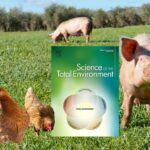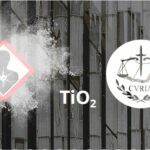
Silica, risks and health at work: update from INRS
INRS has published a practical safety sheet on synthetic amorphous silicas (SAS), their manufacture and use, their properties and hazards, as well as the prevention and protection measures to be implemented.
INRS reminds us that with 180,000 tons produced in France in 2019, SAS is one of the four most declared substances in the nanoparticulate state in the r-nano register. SAS primary particles have a diameter of less than 100 nm and are therefore, in the regulatory sense, “substances in a nanoparticulate state” or “nanomaterials”.
In short…
In vitro, SAS exerts a cytotoxic effect via oxidative stress and apoptosis (cell death). Precipitated and fumed silicas have also shown genotoxic effects (DNA breaks).
Only a few studies have looked at the carcinogenic effects of amorphous silicas, but the potential for cellular transformation as well as epigenetic effects have been reported for some.
In vivo, in rats, inhalation of amorphous silica causes pulmonary inflammation (reversible). In humans, irritation and dehydration of the mucous membranes of the nose and throat, aggravation of asthma or bronchitis, mechanical irritation and dehydration of the skin, redness and stinging of the eyes have been reported. The data are too insufficient to rule on the long-term effects of SAS on workers’ health. Hence the need to minimize occupational exposure to SAS.
The INRS practical sheet proposes detailed prevention measures adapted to each work situation:
Other news on the topic
Upcoming Nano Agenda

- Webconference for analysis laboratories, plant fertilizer manufacturers and distributors, public authorities…
- Moderated by David Krupka, nanotechnologies development manager at AFNOR Normalisation and Emilie Langlois-Bertrand, nantechnologies standardization project manager.
- In partnership with Armand Masion, CNRS Research Director, and Sandrine Mocoeur, Health, Safety, Environment and Quality Manager at SYNGENTA.
- This exchange will also be an opportunity to explore the creation of a national platform to identify standardization needs.
- Website: www.afnor.org/evenement/nanotechnologies-agriculture-cadre-pratique-responsable/
- 8th Congress of Occupational Medicine and Health (CNMST 2026)
- Theme 5: Emerging pathologies and risks, Mr Henri Bastos (ANSES), Pr Lynda Bensefa-Colas (AP-HP), Dr Catherine Nisse (CHU Lille)
- Website: www.medecine-sante-travail.com
- 20th meeting of the “nano and health” dialogue committee
- Organizer: ANSES



